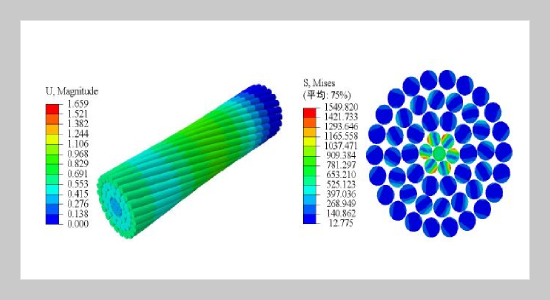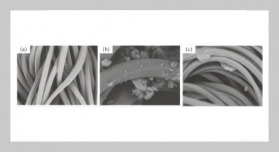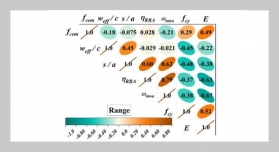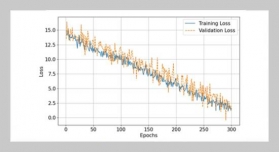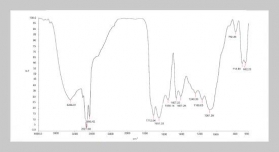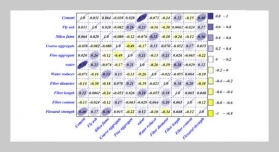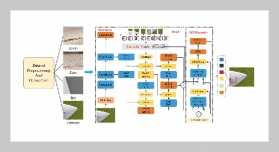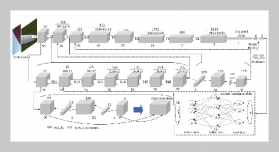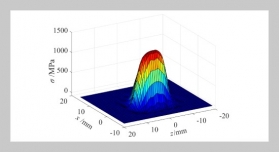Shanpeng Zhao 1,2, PengWang1, Shaoxiang Zhao1, Youpeng Zhang1, and Wei Ge1
1School of Automation & Electrical Engineering, Lanzhou Jiaotong University, Lanzhou 730070, P. R. China
2Gansu Rail Transit Electrical Automation Engineering Laboratory, Lanzhou Jiaotong University, Lanzhou 730070, Gansu Province, China
Received:
May 26, 2021
Accepted:
August 20, 2021
Publication Date:
September 29, 2021
Copyright The Author(s). This is an open access article distributed under the terms of the Creative Commons Attribution License (CC BY 4.0), which permits unrestricted use, distribution, and reproduction in any medium, provided the original author and source are cited.
Download Citation: ||https://doi.org/10.6180/jase.202204_25(2).0018
ABSTRACT
To investigate the mechanical characteristics of catenary positive feeders under galloping state in gale areas, the aluminium cable steel reinforced (ACSR) LGJ-300/25 used in the catenary positive feeder of the Lanzhou- Urumqi high-speed railway is taken as an example. Then, on the basis of galloping amplitude and frequency, the tension on the conductor is deduced. In accordance with the structural and material characteristics of the conductor, a 3D finite element model of the positive feeder is constructed by ABAQUS software. The correctness of the model is verified by comparing the theoretical calculation and simulation results of tension stratification. Different tensile loads are applied to the model to simulate the force of the positive feeder under different galloping degrees, and the mechanical changes of the whole and sections of the steel and aluminium strands are analysed. Results show that under tensile load, the overall deformation of the positive feeder presents a stepped distribution, and the tension of the steel core and aluminium strand varies from inside to outside; the tension ratio is approximately 3:2. The stress at the outlet of the suspension clamp is complex and prone to stress concentration, which mainly cause the fatigue damage of the positive feeder. The results of this study can provide a theoretical reference for the selection and optimal design of electrified railway conductors in gale areas.
Keywords:
catenary positive feeder; mechanical characteristics; galloping; ACSR; finite element method
REFERENCES
- [1] Y. Zhang, c. Zhang, s. Zhao, S. Wang, and Y. Wang, (2020) “analysis on anti galloping effectiveness of cablestayed insulator for catenary main feeder in strong wind section of Lanzhou-Urumqi high-speed railway" High voltage technology 46(11): 3905–3913.
- [2] S. Zhu, S. Xu, and G. Zhang. practice of joint commissioning and test of Lanzhou-Urumqi high-speed railway. practice of joint commissioning and test of Lanzhou- Urumqi high-speed railway, 2017.
- [3] Y. Wang, (2018) “research on wind resistance of catenary AF line of high-speed railway in strong wind area" railway standard design 62(10): 164–169.
- [4] H. Wang, Y. Liu, Y. Dong, and H. Xu, (2008) “research on vibration amplitude of overhead line conductor fatigue test" Chinese Journal of electrical engineering 28(4): 123–128.
- [5] Y. Li, Y. Zheng, and P. Su. “Research on Section Stiffness, Poisson Ratio and Mechanism Characteristics of Large Gross-sectional Aluminum-steel Stranded Conductor”. In: 2012 International Conference on Future Electrical Power and Energy Systems (ICFEPES 2012): Energy Procedia Volume 17,Part A,Sanya, China, 21-22 February 2012. Shoo of Civi Engineering Norhes Dini Universiy Jiin, Chin. Sanya(CN), 2012, 843–850.
- [6] M. Kermani, M. Farzaneh, and L. Kollár, (2010) “Estimation of stresses in atmospheric ice during aeolian vibration of power transmission lines" Journal of Wind Engineering and Industrial Aerodynamics: The Journal of the International Association forWind Engineering 98(10): 592–599.
- [7] Y. Liu, K. Xu, N. Gao, H.Wang, andW. Xiao, (2020) “research on fatigue fracture mechanism of aluminum clamp of high voltage transmission line in strong wind area" Journal of Wuhan University (Engineering Edition) 53(2): 176–182.
- [8] K. Hong, A. Kiureghian, and J. Sackman, (2005) “Bending behavior of helically wrapped cables" Journal of Engineering Mechanics 131(5): 500–511.
- [9] R. Judge, Z. Yang, S. Jones, and G. Beattie, (2012) “Full 3D finite element modelling of spiral strand cables" Construction and Building Materials 35(6): 452–459.
- [10] W. Si. research on Aeolian vibration damage mechanism and detection technology of transmission conductor. master thesis. 2018.
- [11] k. Zhu, C. Liu, and X. Ren, (2005) “analysis of conductor dynamic tension during galloping of overhead transmission line" China Electric Power 38(10): 40–44.
- [12] T. Liu, X. Liu, B. Huo, and B. Yuan, (2016) “experimental research on galloping of continuous iced conductor model" 31(2): 186–192.
- [13] J. Bai. design of galloping monitoring system for high voltage overhead transmission line. master thesis. 2015.
- [14] T. Shao. wire mechanical calculation of overhead transmission line. wire mechanical calculation of overhead transmission line, 2003.
- [15] S. Wang. research on galloping of iced conductor of transmission line and its influence on mechanical properties of tower line system. doctoral thesis. 2008.
- [16] D. Wang, D. Zhang, and S. Wang, (2013) “Finite element analysis of hoisting rope and fretting wear evolution and fatigue life estimation of steel wires" Engineering failure analysis 27(1): 173–193.
- [17] h. Zhu, Y. Liu, J. Zhang, and P. Zhang, (2020) “Layered mechanical characteristic model and simulation analysis of curved conductor of transmission line" hydropower and energy science 38(4): 162–166.
- [18] G. Yuan. research on strand stress of hollow conductor of circular concentric winch. master thesis. 2014.
- [19] X. Zhao and M. Zhao. research on Wear Characteristics and influence behavior of overhead transmission conductor. research on Wear Characteristics and influence behavior of overhead transmission conductor, 2014.
- [20] I. C. Report, (1966) “Standardization of Conductor Vibration Measurements" IEEE Transactions on Power Apparatus and Systems PAS-85(1): 10–22.
- [21] W. Si, X. Huang, l. Zhao, Z. Chen, and G. Pan, (2017) “aeolian vibration fatigue damage mechanism of transmission conductor" Guangdong electric power 30(4): 108–114.
- [22] Z. Zhuang and J. Liao. finite element analysis and application based on ABAQUS. finite element analysis and application based on ABAQUS, 2009.
- [23] M. Zhang, Y. Zhang, G. Zhao, and Y. Xiao, (2018) “research on stress of overhead steel cored aluminum strand considering temperature field" Journal of Zhengzhou University (Engineering Edition) 39(4): 7–11, 35.
- [24] Y. Chen, F. Meng, and X. Gong, (2017) “Full contact analysis of wire rope strand subjected to varying loads based on semi-analytical method" International Journal of Solids and Structures 117(7): 51–66.
- [25] w. Xu. research on vibration fatigue of steel cored aluminum strand at low temperature. master thesis. 2019.
- [26] GB/T1179-2017. Circular wire concentric winch air guide. 2017.


